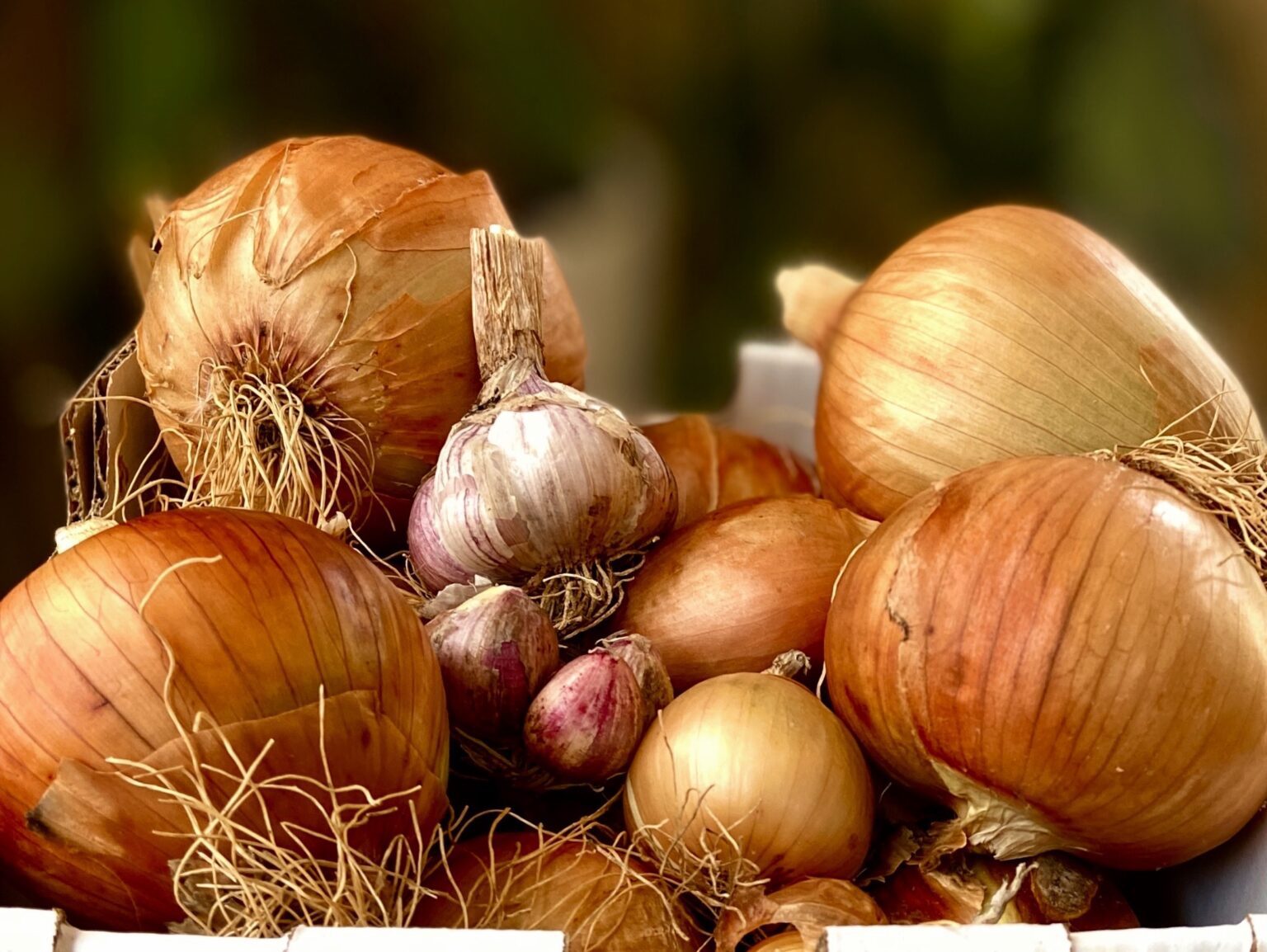Root-to-leaf cooking uses all edible parts of the plant. This approach to cooking can reduce food waste, stretch a grocery budget and introduce cooks to a whole new world of flavors and foods that are right at the edge of your cutting board.
It’s autumn! This is the season of casseroles and cassoulets, pot pies and stews. I end up with plenty of food scraps when I make these recipes — carrot peels, onion skins, leek greens and more. These scraps form the basis for luscious homemade broths and stocks. I keep a “stockpile” in my freezer at all times. As I wash and cut vegetables, I add any scraps to the freezer bag right away. Once the bag is full, I make broth.
Broth vs Stock: Though broth and stock are often used interchangeably, they have different definitions. Broth is made with meat or just vegetables, while stock is made with bones. I’m going to use broth and stock interchangeably here, especially with vegetarian options. Choose which word you like best.
Recipe: This is a no-recipe kind of cooking. Build your stockpile, roast the whole batch then cover with water and simmer. Strain and reduce further if needed; salt to taste. Instructions below are for the more detail-oriented cook, but otherwise, feel free to skip to the variations.
Roast: Preheat oven to 400 degrees. On a lightly oiled pan, roast all scraps for 40–50 minutes, including bones if using, stirring occasionally until softly browned and caramelized. Don’t let them char, which could turn your stock bitter. Remove from oven and put all roasted scraps in large Dutch oven or pot. Carefully deglaze roasting pan with a little water or white wine, scraping up any browned bits (these are called fond); add fond and liquid to pot.
Simmer: Cover contents of pot with a couple inches of water. Simmer on low, lid on, for about an hour. Take off lid and let reduce. Taste often to determine when stock is flavorful enough. Remove pot from heat and let cool.
Strain and adjust to taste: Strain stock into a large bowl with a colander or strainer, pressing on solids with the back of a kitchen spoon. Re-taste stock and reduce further if desired. Do not salt before reducing! Instead, salt to taste after desired richness is achieved. You can also add soy sauce or miso for salt or richness, or brighten the stock with a little white wine or apple cider vinegar. Transfer to Mason jar or other container, and use or freeze within five days.
Variations: Tailor stocks to the flavors you cook with most often. If you favor French or Italian recipes, save the rinds from hard cheeses, stems from most herbs, and greens from leeks. If you prefer dishes from Spain or Latin America, save scraps from bell peppers (a core ingredient in sofrito) and cilantro stems. For East-Asian-inspired dishes, save daikon peels, mushroom stems and any last drops of soy sauce.
Examples: For a light and naturally sweet broth, such as for autumnal casseroles or braised pork, include apple skins and cores, plum skins or squash peels.
A savory base for soups can include cheese rinds, tomatoes, tomato paste or black garlic.
For Thai curries, save daikon peels, lemongrass stalks or ginger peels.
Common ingredients: These are components to include in almost any stock base: apple peels and cores (minus seeds), bay leaves, carrot peels and greens, celery base and leaves, corn cobs, fennel scraps, most herbs, leek greens, mushrooms, onion skins and roots, parsnip peels, scallions and squash peels.
Occasional ingredients: These are “maybes,” depending on the flavor profile of what you plan to make: beets (depending on color and earthiness of dish), cilantro, daikon peels, ginger, lemongrass, lemon or orange rinds, miso or soy sauce, mustard seeds, parmesan rinds or other hard cheese rinds (skip roasting), pepper scraps, plum skins, seaweed, tomatoes, tomato paste, chicken, pork, or beef bones or giblets, and shellfish.
86-ed ingredients: Though most “never” lists for cooking are highly subjective, it is a truth universally acknowledged that brassicas and cruciferous vegetables have no place in the stock pot. They turn stock bitter, grassy and a little bit stinky. These foods either overpower other flavors or add an unpleasant taste: Artichokes, asparagus (unless you’re making a specific asparagus dish, such as risotto), brassicas/cruciferous (bok choy, broccoli, cauliflower, cabbage, collard greens, kohlrabi, rutabagas, etc.), cucumber skins and mint.
Aromatics: Play with spices! Whole black peppercorns add depth, coriander seeds add a bright note and cumin seeds contribute a distinctly earthy element. Dried chilies, of course, create a spicy base. And any amount of garlic is a good idea.
If you cook with something regularly, there’s a good chance you’ll like the flavor in your stock. Save your scraps and you’re well on your way to a customized, delicious homemade stock.
Hannah Green’s Root-to-Leaf column runs on the first Wednesday of every month.




